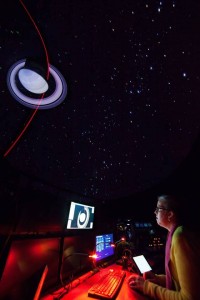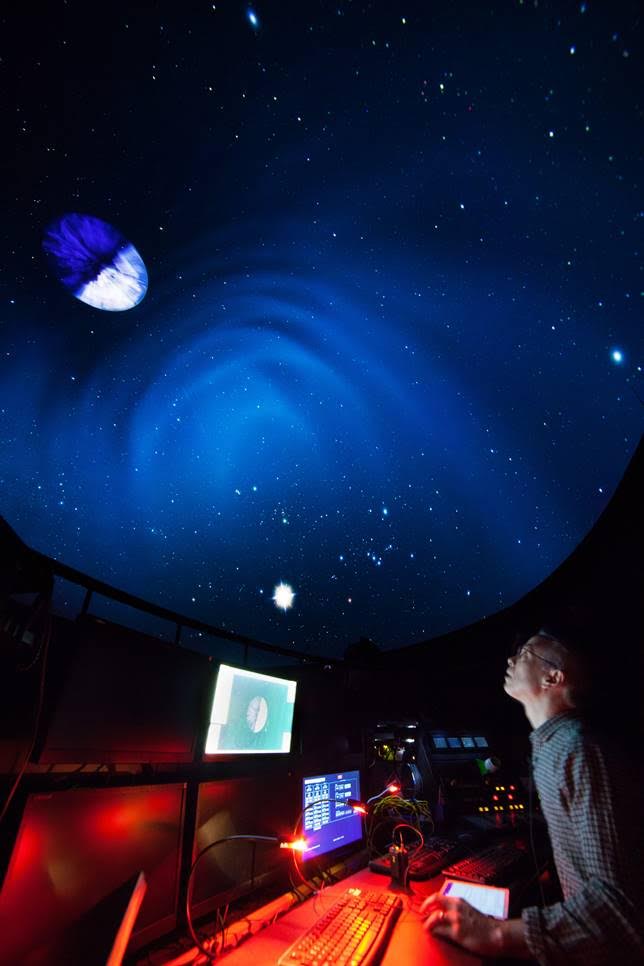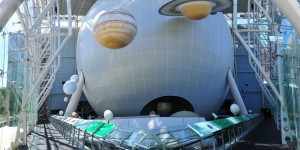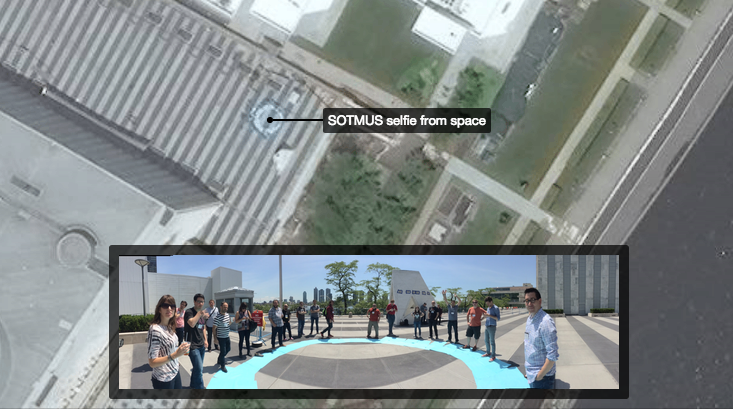For eight weeks every Wednesday, Brett and I snuck away under darkness and rain to the American Museum of Natural History’s Hayden Planetarium to learn how to make a star show. We learned the ins and outs of the planetarium’s computer controls and presented shows for our family and friends on March 30th in the dome. A fellow classmate called it “playing with the biggest toy in New York City.”


The program, Adult Digital Flight School, is a grown up version of a class that the museum’s education department created for school age children. The software, called Uniview Digital Universe, lets you display objects from moons and satellites to planets and galaxies to the large structure of the universe. It also has time and motion controls that allows the user to fly to selected objects and simulate the motion of the objects in space. You can examine the moon as it passes in front of the sun for a solar eclipse or watch the Cassini satellite make its initial 2004 approach of Saturn and then turn up the speed of time and watch ten years of the satellite’s orbits go by in seconds. It’s dizzying and took a lot of patience (and a little Dramamine) to feel in control of the “flight.”
The class structure included time in the classroom developing a program and time in the dome to test out the feel of the controls as your show is projected to the dome. And of course a lot of time at home researching our topic and writing our scripts. Each student selected very different study subjects. My topic as you may have guessed was the Cassini-Huygens mission to Saturn. Brett studied aurora activity on the Earth and other planets in our solar system and the effect of the magnetosphere and nearby moons on auroras. We learned from our classmates about stellar distances, constellations, near Earth object collision risk, moon tides and life on the International Space Station. We also found out where the Borg live. [Spoiler Alert] Apparently, the S.S. Enterprise could only have traveled within the Milky Way Galaxy. Warp 8 just doesn’t get you very far.
 AMNH has a public version of the Uniview software that you can download from the Hayden Planetarium website. It was great fun and highly recommended if you ever get the urge to drive the dome.
AMNH has a public version of the Uniview software that you can download from the Hayden Planetarium website. It was great fun and highly recommended if you ever get the urge to drive the dome.
If you would like to download the script from my exploration of the Cassini-Huygens mission, be my guest.
Update 06/09/2017: The Best of Cassini: 13 Years in Orbit Around Saturn, By Alan Taylor, The Atlantic, June 7, 2017.




